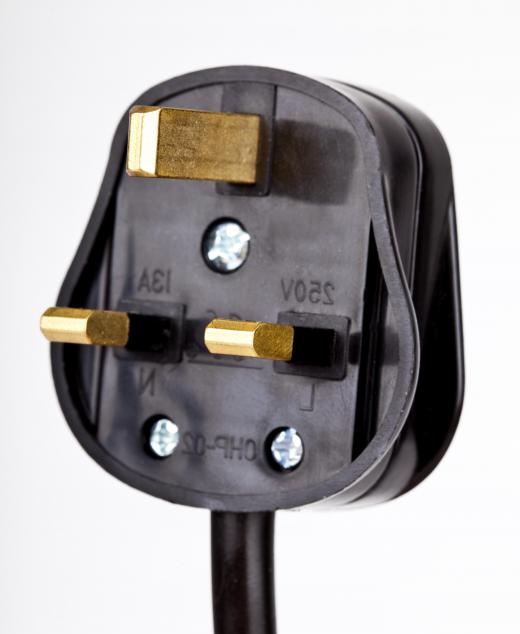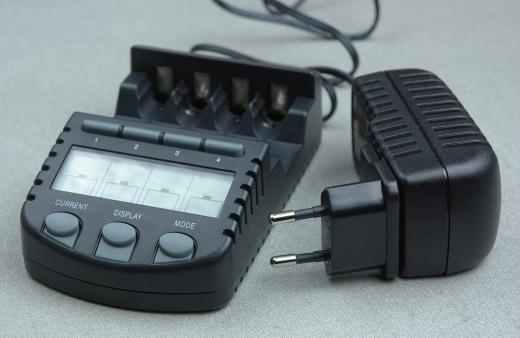Electrical outlets, or electric receptacles, help provide direct access to an electric power source throughout a home or other building. Electrical outlets are designed to feed power to most electrically-run equipment from a series of small boxes that are wired directly to an electrical panel or other power source. Outlets are commonplace in most homes and businesses, as they provide both easy and direct access to electrical power from various points. An outlet’s design may vary depending on the current supported, the country of origin, and the type of equipment or plug it must accept. Due to these variances, not all electrical outlets and electric-run components are mutually compatible.
Electrical outlets are usually wired from the electrical panel to various points within a home’s walls, and at other key points in the house where electrical access is desired. The prongs found at the end of a device’s cord plug into the recesses of the electrical outlets, thereby helping to eliminate the risk of electric shock. When a device is plugged in to a compatible outlet, electricity is fed into the device via the receptacle, which is wired, usually within inner walls, to an electrical panel or main power source. Another wire then carries the electric current back to the electrical panel or power source.

Most standard electrical outlets found in the United States are made to house either two or three-pronged electric cords and, depending on the equipment they are to power, usually have a voltage of 110 or 220. Smaller devices such as television and stereo components will typically require a 110-volt electrical outlet to operate. 220-volt outlets usually are installed to power larger appliances like a stove or clothes dryer.

There are many types of electrical outlets found throughout the world, therefore it is important to know the differences in outlet types and voltages found in various countries. The United States, portions of South America, and some Caribbean and Middle Eastern countries, all share a universally-compatible type of outlet. Most of Europe uses what is commonly called the Europlug, which is much different than the standard United States outlet in terms of shape and voltage, making it incompatible with equipment or devices from another country or continent. For international travelers, there are adapters and converters available that allow otherwise non-compatible electronics or components to plug in to electrical outlets found in other countries.

